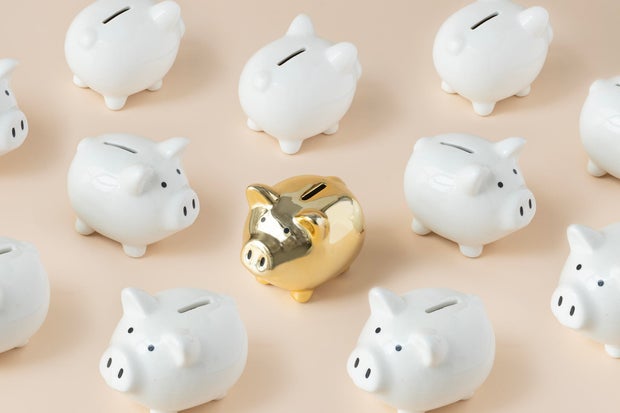 Gold investing can be beneficial for a variety of investors, including millenials.
Getty Images
Gold investing can be beneficial for a variety of investors, including millenials.
Getty Images
Gold has been a popular investment in recent years— and it's no wonder why. Prices have soared since the start 2024, offering higher gains than many other asset classes. After surpassing the $3,000 per ounce mark in March, gold broke the $4,000 per ounce record in October, a remarkable surge in less than a year.
Not only does gold offer high returns these days, but it's also a smart portfolio diversifier and can protect against inflation and recessions. It can even be a good buy for younger investors just starting to build their portfolios.
Are you a millennial looking to beef up your investments? We asked some experts why gold should be a part of that strategy.
See how your portfolio could benefit from gold here now.
Is gold suitable for millennials?
Millennials considering a gold investment should understand all of the following benefits:
It safeguards you from downturns in other assets
You never know what might happen with the stock market, real estate or other asset classes. And if those take a dip, you'll want your money invested elsewhere to balance those losses.
That's what gold offers, providing investors with "instant diversification," according to Ben Nadelstein, head of content at Monetary Metals. It's uncorrelated to other asset classes, and often, when those other investments are seeing a downturn, gold prices only grow — allowing you to offset dips in other areas.
"Younger investors should be looking at gold because it offers something most of their portfolios likely lack, which is diversification," Nadelstein says. "Stocks are what make up an overwhelming majority of younger investors' portfolios or 401Ks, and gold can be a great way to diversify their holdings."
Protect your assets with gold now.
You can protect your wealth
Gold can also help you safeguard your money over time — particularly as economic conditions change, inflation rises or there are hiccups like recessions or market crashes.
"If you believe today or in the future that we are nearing a recession or depression, then consider gold as a possible option to plant your money," says Eric Elkins, CEO of Double E Financial Solutions. "Gold, historically, has done very well when the U.S. has had economic turmoil."
Gold also helps you counter cost of living increases, Elkins says, and should be something young investors hold long term.
"The price of gold continues to climb unlike the dollar," says Nick Fulton, managing partner of USA Pawn Stores of Mississippi and chairman of the Mississippi Pawnbrokers Association. "Cash in the bank is losing money. Diversity is the key to any portfolio, and with gold continuing to rise, it just makes sense to add a little to yours."
Starting young means more benefits over time
By buying gold in your younger years, you have more opportunities to experience the benefits of it. As Nadelstein puts it, "Older investors might have more ounces, but younger investors have more years for those ounces to work for them."
It's also a solid investment in your future. Unlike trendier investments like Bitcoin or other crypto, gold is a proven asset. It's been a coveted material for centuries and central banks around the world invest in it often.
"It's one of the few assets that will still be valuable when many of today's companies, currencies, or products may be long gone," Nadelstein says. It's also "something you can pass down, making it part of a meaningful legacy for future generations."
How to invest in gold
If you're ready to invest in gold, there are many ways to go about it.
"Investors can invest in jewelry, gold bars, coins, etc., where they can enjoy it while it's appreciating," Elkins says. "Other gold investments such as gold ETFs or mutual funds might not be as fun, but they let you play in the investment market, hopefully provide solid returns, and some provide dividends that investors could enjoy."
You can also explore gold IRAs, gold stocks, or gold futures, depending on your goals. "At the end of the day, gold is cool," Elkins says.
That said, be careful with how much you ultimately do invest in the precious metal, particularly in today's unpredictable economic climate. Many experts recommend limiting the gold portion of your portfolio, no matter the forms it takes, to a maximum of 10%. That will permit other, income-producing assets to perform as intended without being crowded out by the precious metals portion of your portfolio.
And, if you're unsure about which type is best suited for your investor profile, consider speaking with a financial advisor or representative from a top gold IRA company. They can answer any questions you have and help you find a strategic role for gold in your larger portfolio.
Edited by Matt Richardson


















































